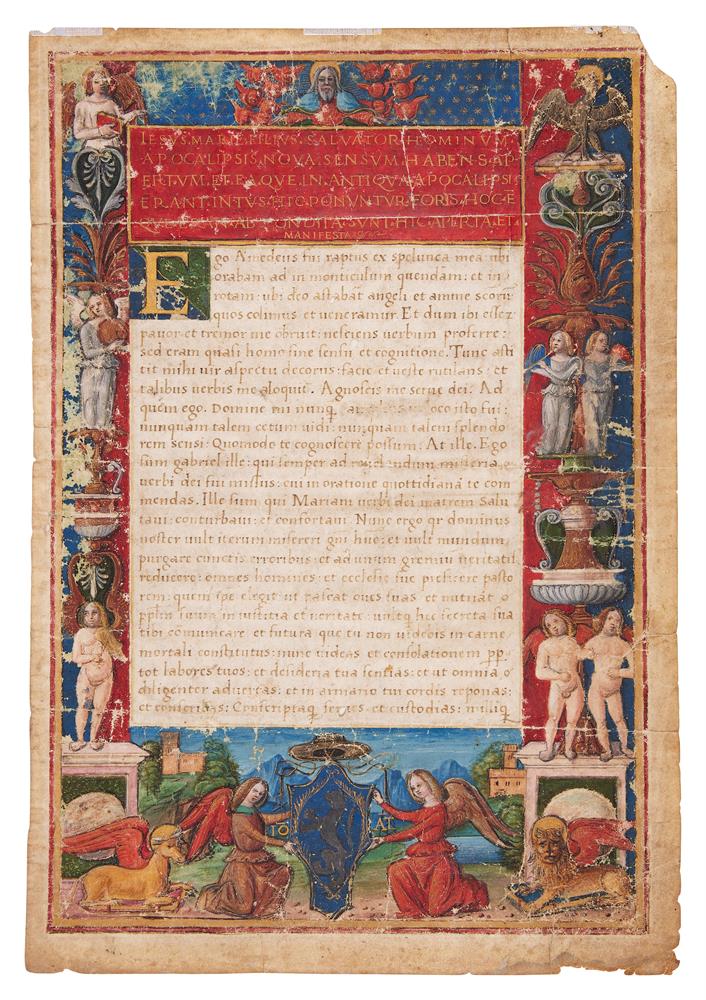An immediate D.F.M. awarded to Sergeant B. L. Savill, No. 77 Squadron, Royal Air Force, who died during a remarkable search and rescue operation after his aircraft was forced to ditch in the sea Distinguished Flying Medal, G.VI.R. (581475 A/Sgt. B. L. Savill, R.A.F.); 1939-45 Star; Air Crew Europe Star; War Medal, together with the recipient’s original Observer’s and Air Gunner’s Flying Log Book for the period September 1939 to September 1940, named condolence slip, an identity bracelet, and a letter home written a few days before his death, extremely fine (4) Footnote D.F.M. London Gazette 12 July 1940. The following joint citation was published in respect of the immediate awards of the D.F.C. to the three officers mentioned, and of the D.F.M. to Sergeants Dawson and Savill: ‘These officers and airmen were the crew of an aircraft, piloted by Pilot Officer Dunn, and detailed to carry out a bombing attack on the Ruhr one night in June, 1940. After being subjected to heavy anti-aircraft fire for some fifteen minutes, during which their aircraft was repeatedly hit, they were attacked by a Messerschmitt 109. The first attack disabled the inter-communication gear and also wounded the air observer, Sergeant Savill, and the wireless operator, Sergeant Dawson. The rear gunner, Pilot Officer Watt, was unable to warn the captain of the enemy fighter’s second attack but, by quick reaction and skill in aiming, he delivered a good burst of fire at short range which destroyed the enemy. During this second attack, however, one engine was disabled. Despite these difficulties the target was successfully bombed before a course was set for home. For three and a half hours the aircraft, flying on one engine, steadily lost height until the North Sea was crossed at only 400 feet. During this time the navigation was ably carried out by Sergeant Savill, despite the pain from his wound, while Sergeant Dawson, operating the wireless apparatus, secured a number of essential homing bearings, thus materially assisting in assuring the safety of the crew. Pilot Officer Montagu, who was the second pilot, made necessary preparations for abandoning the aircraft and his personal example of coolness and efficiency was of the greatest assistance to his captain. Pilot Officer Dunn displayed resolution, courage and determination in piloting his badly damaged aircraft, but was forced to land in the sea close to the south coast. This crew showed the greatest determination, courage and gallantry throughout the operation.’ The above citation details the events of Sergeant Savill’s second operational sortie on the night of 19 June, on which occasion he and his crew were successfully rescued. He returned to operational flying one month later and completed a further twelve sorties, including two to Italy. On the night of the 23rd/24th September, the target was the aircraft factory at Spandau, on the outskirts of Berlin. During a successful bombing run over the target, their Whitley bomber had encountered heavy flak and a piece of shrapnel punctured one of the fuel tanks. On the return flight, despite the pilot’s best efforts to conserve fuel, the aircraft steadily lost height and, as he headed out across the North Sea, it soon became clear that it would not be possible to reach the home coast. Accordingly, an S.O.S. message was sent out and preparations were once again made for a ditching, this time in heavy seas. The pilot made a good landing under the circumstances and all the crew made it safely into the dinghy. One of the crew, Sergeant Riley, noted that his watch had stopped on impact at 5.50 on the morning of the 24th. Their flight time had been almost eight hours and they were still about 100 miles from the English coast. The rescue services had responded to their distress signal and a Hudson was sent out to locate their dinghy, but without success. However, another was sent mid-morning and managed to locate the tiny craft in rough seas, signalling the position of
An immediate D.F.M. awarded to Sergeant B. L. Savill, No. 77 Squadron, Royal Air Force, who died during a remarkable search and rescue operation after his aircraft was forced to ditch in the sea Distinguished Flying Medal, G.VI.R. (581475 A/Sgt. B. L. Savill, R.A.F.); 1939-45 Star; Air Crew Europe Star; War Medal, together with the recipient’s original Observer’s and Air Gunner’s Flying Log Book for the period September 1939 to September 1940, named condolence slip, an identity bracelet, and a letter home written a few days before his death, extremely fine (4) Footnote D.F.M. London Gazette 12 July 1940. The following joint citation was published in respect of the immediate awards of the D.F.C. to the three officers mentioned, and of the D.F.M. to Sergeants Dawson and Savill: ‘These officers and airmen were the crew of an aircraft, piloted by Pilot Officer Dunn, and detailed to carry out a bombing attack on the Ruhr one night in June, 1940. After being subjected to heavy anti-aircraft fire for some fifteen minutes, during which their aircraft was repeatedly hit, they were attacked by a Messerschmitt 109. The first attack disabled the inter-communication gear and also wounded the air observer, Sergeant Savill, and the wireless operator, Sergeant Dawson. The rear gunner, Pilot Officer Watt, was unable to warn the captain of the enemy fighter’s second attack but, by quick reaction and skill in aiming, he delivered a good burst of fire at short range which destroyed the enemy. During this second attack, however, one engine was disabled. Despite these difficulties the target was successfully bombed before a course was set for home. For three and a half hours the aircraft, flying on one engine, steadily lost height until the North Sea was crossed at only 400 feet. During this time the navigation was ably carried out by Sergeant Savill, despite the pain from his wound, while Sergeant Dawson, operating the wireless apparatus, secured a number of essential homing bearings, thus materially assisting in assuring the safety of the crew. Pilot Officer Montagu, who was the second pilot, made necessary preparations for abandoning the aircraft and his personal example of coolness and efficiency was of the greatest assistance to his captain. Pilot Officer Dunn displayed resolution, courage and determination in piloting his badly damaged aircraft, but was forced to land in the sea close to the south coast. This crew showed the greatest determination, courage and gallantry throughout the operation.’ The above citation details the events of Sergeant Savill’s second operational sortie on the night of 19 June, on which occasion he and his crew were successfully rescued. He returned to operational flying one month later and completed a further twelve sorties, including two to Italy. On the night of the 23rd/24th September, the target was the aircraft factory at Spandau, on the outskirts of Berlin. During a successful bombing run over the target, their Whitley bomber had encountered heavy flak and a piece of shrapnel punctured one of the fuel tanks. On the return flight, despite the pilot’s best efforts to conserve fuel, the aircraft steadily lost height and, as he headed out across the North Sea, it soon became clear that it would not be possible to reach the home coast. Accordingly, an S.O.S. message was sent out and preparations were once again made for a ditching, this time in heavy seas. The pilot made a good landing under the circumstances and all the crew made it safely into the dinghy. One of the crew, Sergeant Riley, noted that his watch had stopped on impact at 5.50 on the morning of the 24th. Their flight time had been almost eight hours and they were still about 100 miles from the English coast. The rescue services had responded to their distress signal and a Hudson was sent out to locate their dinghy, but without success. However, another was sent mid-morning and managed to locate the tiny craft in rough seas, signalling the position of















Testen Sie LotSearch und seine Premium-Features 7 Tage - ohne Kosten!
Lassen Sie sich automatisch über neue Objekte in kommenden Auktionen benachrichtigen.
Suchauftrag anlegen